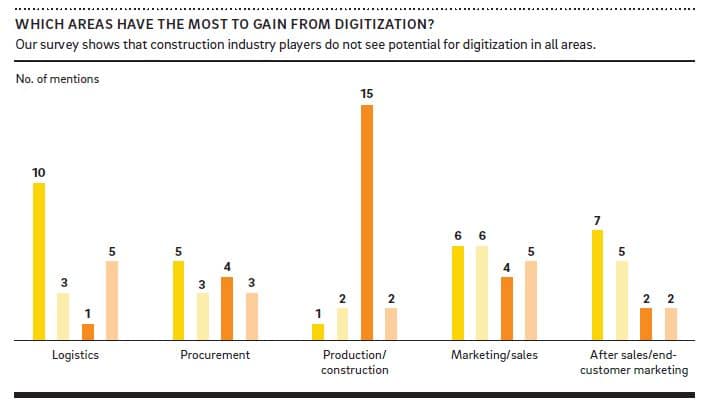-
Phone Number
-
Email Address
The smartest use of digital solutions in the field of engineering or construction has the potential to become one of the most important axes and cost-effective, especially in terms of project design, acquisition, manufacture and delivery thereof. At once, It is also one of the main obstacles facing the needs that companies acquire from a digital investment stronger, the approach of new processes of automation or integration of information technology information and communications.
We must remember that we were already talking about the artificial intelligence in the construction sector and architecture and how it will strongly affect the sector. Also, if we review the latest report issued by Midwest Economic Policy Institute (MEPI – University of Illinois), will notes that, for example, the automation of the construction industry - in the US by 2057 - could displace or replace up to 49% of the workers that we can find in a construction site traditional today. (See report HERE)
As with so many industries, the model business of construction companies and offices of engineering is not exempt from the challenges posed by the adoption of new digital technologies.
New technological challenges that must be considered and adopted if they want to survive in such a competitive market and in an area where it has historically lagged behind, creating a significant productivity gap:
Remembering that in the technological field of automation We already have real examples of important advances such as:
Content menu:
There are four key aspects of digital transformation which are useful for getting digitization up and running. His importance extends to all links in the chain of value:

Although in reality those involved in the industry of the construction do not see the same potential for digitization in all areas.

The two graphs above are from the report from Digitization in the Construction Industry…
Recently, the Global Industry Council (GIC) published a report that highlights five challenges to the adoption and implementation of digital technologies in the area of construction and engineering, in addition to offering solutions and case studies to help other companies to embrace digital technology.
Thanks to digitization we have access to more information and new technologies. The challenge is to remain efficient and be able to coherently integrate all this information and technology in the ecosystem of the company without losing competitiveness.
Without an integrated digital platform, users share scattered files via email, to put an example, or storage services, which causes document loss, reprocessing, missing responsibility and delayed productivity.

Streamlining is what helps drive efficiency. It must be remembered that having multiple technologies or systems are actually a consumption of time and resources.
We should learn to focus on one system or technology that guarantees greater value and better efficiency, reduce costs or optimize the business, and reject that technology that does not provide added value.
Construction companies use a wide range of processes and procedures to perform the same work. The lack of standardization in expansion projects can become a big headache for everyone involved; promoters, partners, subcontractors…etc.
As technology penetrates the company, it must to have enough equipment or experts that can handle technology professionally. A challenge that sometimes is not understood by the employer and which undoubtedly represents a absolute necessity.
There is an unfortunate lack of technological expertise in many companies, but certainly not every employee needs to be a genius in technology to be able to work with these new tools.

It takes a work effort, both challenges cultural and technical that can delay and guarantee the adoption of new technologies. You must invest time and support resources that offer solid training.
For example, as we saw in the new applications of augmented reality for construction and decoration with different examples.
Digitalization can cause apprehension, particularly among older employees. If the solution has a learning curve that is too steep or does not meet the promised targets immediately, employees will ignore or they will abandon technology altogether.
Businesses find it difficult to measure and communicate the benefits obtained from digital investments.
Dramatic changes in technology and processes are often often daunting and challenging, especially if the return on investment is unclear. should be establish a "road map" or strategy that is clear and well defined.
Companies should emphasize concentrating on the skills necessary to succeed in the new dynamics of market. Although this may seem like a difficult challenge, the companies that change their internal processes, become more flexible and efficient are those that will survive in a world where competition is increasingly fierce.
If you liked the article, rate it and share!